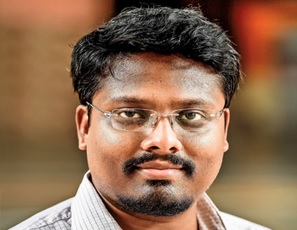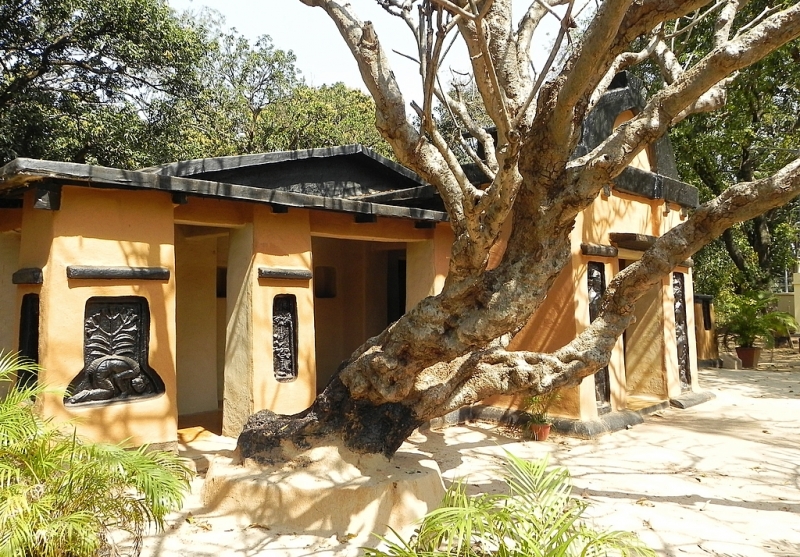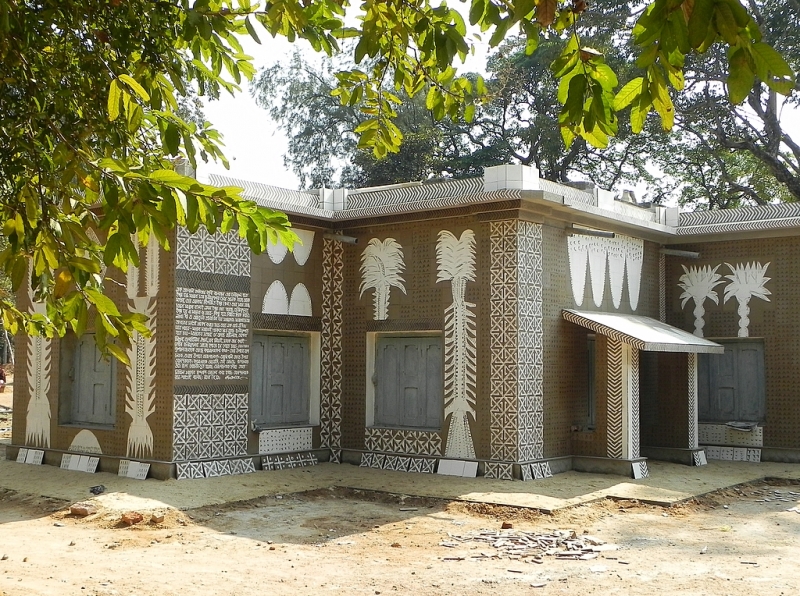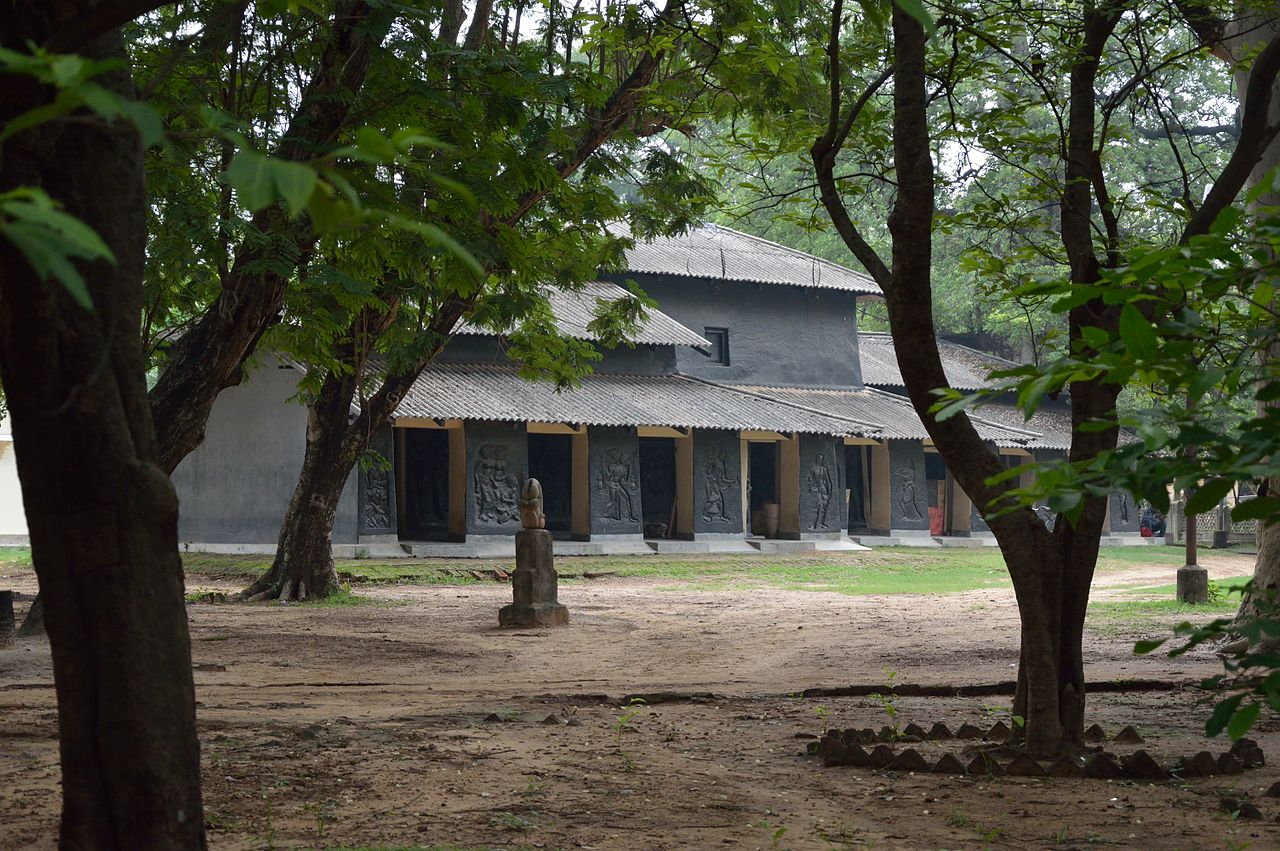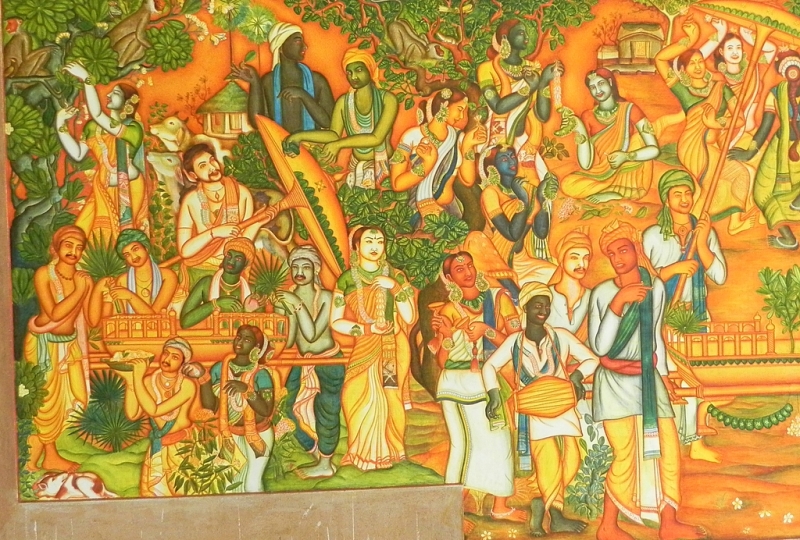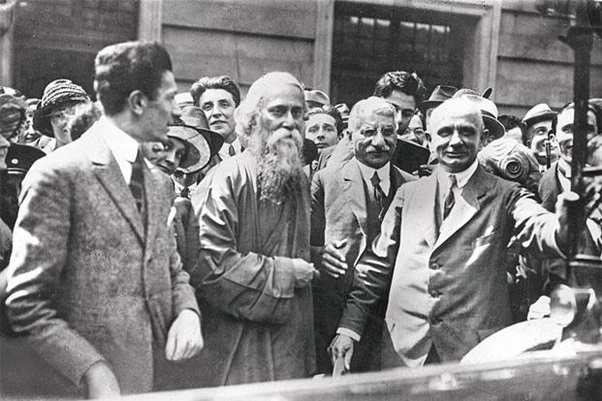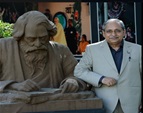
Inspiration from Guru Rabindranath Tagore: Sustainability, Entrepreneurship & Internationalization in Higher Education
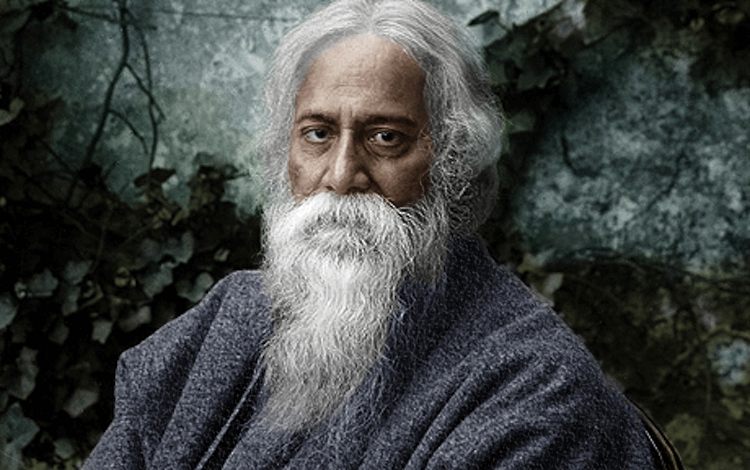
(Image Courtesy: https://photoartinc.com)
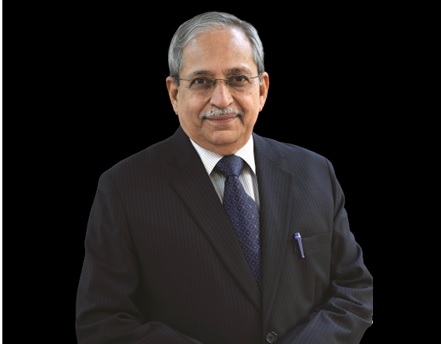 H. Chaturvedi
H. Chaturvedi
Director, BIMTECH
Professor of Strategic Management
(View Full Profile) (Personal Website)
Prof. Subhanjan Sengupta
Assistant Professor of Entrepreneurship, Sustainability and Strategy, BIMTECH
(View Full Profile) (Personal Website)
We live in times when the narrative about how education can contribute to society and organizations has been more critiqued than welcomed. Part of this is because there have been numerous incidents that have led to a tension in the realm of academic institutions. It is to be remembered that the purpose of academia is to contribute in driving this world towards a better tomorrow. Given such a background in which higher academic institutions of today operate, it is time to reinstate the true purpose of ‘education’.
In today’s world, more than ever, there is a call for higher education to be international in perspective for multi-level and multi-cultural inclusion; entrepreneurial in approach to not only live through the rapidly changing world but also inspire young people to be entrepreneurial, and also contribute to the momentum of sustainability through an appreciation of the societal, economic, and natural environment.
But where do we draw our learnings from? While many will say that we take a look at the latest cutting-edge solutions and research that exist out there, which in any case we have to do; let us look back more than a 100 years into the past to draw inspiration from one of the most prolific and globally renowned thinkers, educationists, and reformists of India – Rabindranath Tagore.”
Kavi Guru Rabindranath Tagore is known not only for his Nobel Prize (bestowed in times when we were still colonized) and for being one of the most prolific literary geniuses of the highest order that the world has ever produced, but also because he made a significant contribution to education in India by rekindling the ancient tradition of learning amidst a natural environment, by encouraging an appreciation of indigenous learning, by inspiring students to try out new things for achieving higher social cohesion, and by internationalizing the abode of learning that he created at the famous Shantiniketan (Abode of Peace), founded in 1901.
(Image Courtesy: http://www.visvabharati.ac.in)
Sustainable Development
Tagore had inherited the peaceful and tranquil land of Shantiniketan from his father Debendranath Tagore. For his family, the purpose of this land was to serve as a location of meditation and peaceful repose. He inherited the land, a house to stay within the woods of that peaceful land, and a prayer hall; all made by his father. Tagore transformed this setting into what eventually became a reputed university with its own specialties.
(Image Courtesy: http://www.visvabharati.ac.in)
Tagore had a modernist approach, which helped him draw the best from ancient education system in India as well as the modern British education of early 20th century. His education system combined learnings from ancient Vedanta tradition in Indian scriptures (such as the Gita and the Upanishads) with Western classical thought and modern scientific attitude.
He wanted this education to be multi-disciplinary, and evolve amidst a purely amidst a natural environment, staying far away from the luxury of abundant material resources, and with a high spirit of collective learning.
Classes were not held within confined spaces, but out in the open, amidst the lap of nature, to emphasise the naturalistic way of learning (what we now refer to as ‘experiential’ education).
(Image Courtesy: WikiMedia)
Along with that, he embedded a deep appreciation of art and culture so as to preserve our cultural heritage through generations. The tradition of celebrating ‘Basant Panchamai’ at Shantiniketan continues even today. While today we talk of these essential tenets for creating a sustainable society through deep learning, Tagore pioneered it long ago, and was very successful at it.
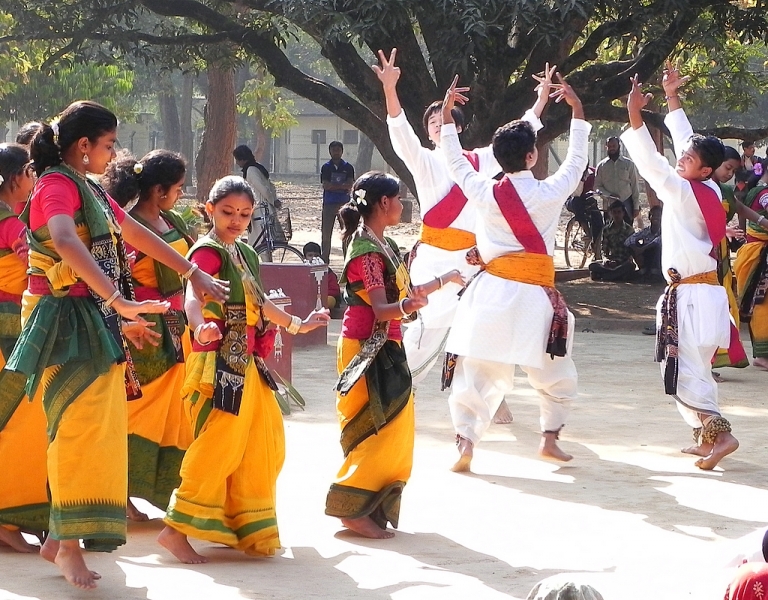 (Image Courtesy: http://www.visvabharati.ac.in)
(Image Courtesy: http://www.visvabharati.ac.in)
Social sustainability was at the very centre of his educational objective. While today we talk about building a resilient future generation with the ability to conserve our finite natural resources while developing a more habitable world for our ecological ecosystems, Tagore started it long back in our country with the purpose of making the students of his ashram grow up as resilient beings with the ability to deal with social hazards, embrace and celebrate local traditions, and cultivate emotional and intellectual wellbeing, so as to create a new India.
One of his institutes in Shantiniketan, called the ‘Institute of Rural Reconstruction’, made noise around the world with its speciality in reconstructing the rural environment. That underscores the significance that we attach today to social, environmental, and economic sustainability. And it brings about another dimension of his virtuosity – being a social entrepreneur.
True Spirit of Entrepreneurship
By building a school and then a University at Shantiniketan, out of nowhere, Tagore demonstrated a strong entrepreneurial spirit. It was not surprising because Tagore grew up in a family that was not only full of members with a wide range of skills from health sciences to arts, music and theatre, but also a family that had business acumen and accounting knowledge.
Tagore’s grandfather, Dwarkanath Tagore was one of the most prolific Indian industrialists in the early 19th century. He had set up multiple commercial ventures in partnership with British traders, ranging across banking, insurance, shipping, tea plantations, jute mills, to name a few. Needless to say, the entrepreneurial spirit ran in the family.
As a child, Tagore was home schooled in almost all disciplines. It is said that alongside being a prolific poet and a play writer, he was an excellent editor and columnist. Not only was he good in popularising his work with the help of good friends in colonial India and in the British empire, but he also made good money with his copyrights. But, as all entrepreneurs bootstrap, Tagore did the same to raise funding for his vision of Shantiniketan as an educational destination.
(Image Courtesy: http://www.visvabharati.ac.in)
As Tagore would travel the world, he would pitch about his education system that he was developing at Shantiniketan, and would seek people who would be interested to contribute to his initiative. There were even moments when Tagore would sell his copyrights, and even use his Nobel Prize money for setting up his schools. He would pull resources from everywhere to ensure his dream survived and scaled up. Sounds familiar!? Yes…very much entrepreneurial and resource oriented.
Tagore also wanted to orient the students of Shantiniketan towards building qualities such as creative thinking, nurturing curiosity, cultivating an awareness of the mind, developing team spirit, broadening outlook beyond the immediate local to an international context, and imbibing a man-environment relationship by staying close with the society and the environment. These are some essential qualities that may not have necessarily created business unicorns, but instilled an ‘entrepreneurial mindset’ that led to a generation of pioneers who led large institutions and created many opportunities in future India.
Internationalization
An educationist, even in those days, had to internationalise his mission to invite people across the world to become direct or indirect stakeholders in his cause. As Tagore travelled across Asia, Europe, Russia, and North America, he would speak not only about his literary work, but also about Shantiniketan and welcome people to join his cause. It had drawn great minds to his support such as Mahatma Gandhi, Pandit Nehru, William Butler Yeats, Thomas Moore, Albert Einstein, Sir William Rothenstein, Leonard Elmhirst, Charles Freer Andrews, William Winstanley Pearson, and Romain Rolland.
(Image Courtesy: tagorecentre.org.uk)
Tagore would set up his schools in collaboration with thinkers, intellectuals, and scientists across India and the world. It was with Leonard Elmhirst, a famous agricultural economist of those times, that he had set up the famous ‘Institute of Rural Reconstruction’. For oriental studies, scholars from all over the world came to stay, study, research, and teach. Charles F. Andrews and William Winstanley Pearson worked selflessly at Shantiniketan till their last days.
In Tagore’s lectures at the Oxford University, and at various forums in Queen’s England, people would know about his work in reforming rural India through education. In his lifetime, Tagore had been to thirty countries on five continents. It was said that he was a man ahead of his time.
When we compare the challenges of today with what Tagore had tried to achieve, we see that the essential qualities that we need for building an impactful educational institution is undisputable. It was as much true then, as it is now.
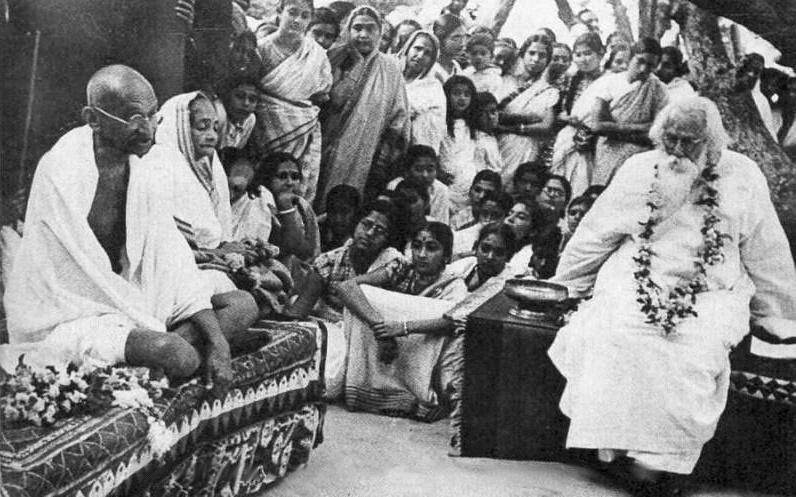 (Image Courtesy: Wikimedia)
(Image Courtesy: Wikimedia)
If someone like Rabindranath Tagore had to do so much to see his dreams materialise, it underscores our need as educationists to be dedicated, devoted, and committed, to transform the world into a better place, by doing our best in upholding sustainability, entrepreneurship, and internationalisation.
On this note, let us remind ourselves of what he said long time ago: “The highest education is that which does not merely give us information but makes our life in harmony with all existence”.



